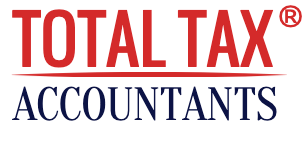The yearly limit on the number of contributions paid to, or benefits received from, a pension scheme before the member is required to pay tax is known as the pension annual allowance (AA). Carry forward is a mechanism for a member’s annual allowance to be increased during the tax year. It may allow a member to absorb or reduce any annual allowance excess paid in the previous tax year, lowering the amount of any prospective annual allowance charge. If your pension funds for a tax year exceed your allocated annual allowance, you will be subject to a tax charge.
Annual Pension Allowance
The annual allowance is the maximum amount of tax-free pension savings that an individual can have each year. There is nothing that prevents a person from contributing more than their annual allocation. The excess would be subject to an annual allowance charge, but they would still be entitled to claim tax relief on all of their personal and third-party contributions up to the higher of 100% of relevant UK earnings or £3,600 per year. The yearly allowance should not affect the majority of members, but there are a few scenarios where members’ NHS Pension Scheme benefits could grow to the point where they exceed the allocation.
Annual Allowance Limit
For the current tax year, the yearly allowance limit is £40,000. Contributions in excess of this amount will incur a tax penalty known as the yearly allowance charge. Your annual allowance will be reduced by £1 for every £2 of adjusted income beyond £240,000. The maximum decrease is £36,000, thus anyone earning £312,000 or more will be entitled to a £4,000 annual allowance under the rules. You’ll have a lower money purchase yearly allowance if you remove lump sums from your pension funds or start collecting an income from flexi-access drawdown.
How to calculate Annual Pension Allowance?

On its website, HMRC provides a number of calculators to assist you in determining if you have exceeded your yearly allowance. The majority of folks afflicted by this problem will wish to use this calculator; however there are alternatives accessible for those with unique circumstances.
What happens if the Annual Pension Allowance exceeds?
Going over the annual allowance has two major repercussions. The first is that a person will not be able to deduct the excess amount from his taxes. The second, more serious issue, is the possibility of an increase in his tax burden. If the fee exceeds £2,000, a person can request that it be removed from your pension payments.
What counts in Annual Pension Allowance?
You can contribute up to £40,000 of your net salary to a pension pot, plus any tax-free contributions made by you and your employer. If you are under this limit, keep note of your contributions because they contribute to your annual allowance. With a 20% tax break, each donation effectively climbs by 25%, putting you close to the limit.
Role of Annual Allowance for final salary pensions
Final salary pensions give a guaranteed income for the rest of one’s life; therefore, there is no set pot size to work with. This makes calculating how close you are to the annual allowance more difficult. The allowance is computed in the following way: the total value of the pension is calculated based on the amount of income it may offer over a normal retirement.
Tapered pension Annual Allowance
Your yearly allowance began to decrease if you previously earned more than £110,000 and your adjusted income was more than £150,000. The adjusted annual allowance is your total taxable income, which includes your salary, dividends, rental income, savings interest, and employer pension contributions. The annual limit steadily decreases from £10,000 to £4,000 for persons with a total income of more than £300. Some NHS personnel who have received significant tax bills will be relieved of their stress as a result of this.
Money Purchase Annual Allowance

This is something to think about if you have taken use of your pension in a flexible way. The Annual Allowance will continue to be the principal allowance to consider in the post-April 2015 world, but the Money Purchase Annual Allowance (MPAA) regulations will also apply where flexibility has been gained via the new flexible pension rules (trigger event). This is a decrease from the £10,000 that was in effect for the tax years 2015/16 and 2016/17. The Money Purchase Annual Allowance must be computed alongside the annual allowance, not in place of it.
What are Pension saving Statements?
Pension savings statements are intended to assist people in keeping track of their retirement funds. The pension input amount for a tax year, as well as the previous three tax years, will be confirmed on a statement. Collecting information on pension funds for each registered pension scheme in which an individual participates will allow them to determine whether they are liable to pay an annual allowance charge. HMRC requires scheme administrators to provide an event report detailing any pension savings statements they have issued. The event report must be completed for the tax year that the pension savings statement refers to. A member’s request for a statement must be fulfilled by the 6th of October after the end of the fiscal year.
Can Annual Pension Allowance be carried forward?

You don’t lose your annual allowance totally if you haven’t spent it up in previous years. Carry forward is a method that allows you to make pension payments to make up for any unused allowance. You must meet two conditions in order to use carry forward. To begin, you must have earned at least the amount you desire to contribute in total this tax year unless your employer contributes and be a member of a UK-registered pension scheme.
How pension carry forward works?
When most UK taxpayers contribute to their pensions, they receive tax assistance from the government. HMRC charges a £25 tax supplement to every £100 you put into your pension. You can get tax reduction on any pension contributions you make up to 100% of your salary, up to £40,000 gross in 2022/23. You can donate extra with unused allowances from prior years if you use up all of your annual allowance in one year. One of the most important pension annual allowance carry forward laws is that you can’t get tax relief on contributions that are greater than your earnings in any given tax year. You can carry forward unused yearly allowances from the previous three tax years, beginning with the most recent, which is 2019/20.
Benefits for High Earners
The declining annual allowance may harm you if you make a lot of money. If you have a ‘adjusted income’ of more than £240,000, the taper may cut your annual allowance to as little as £4,000. Using carry forward to make the most of any unused pension allowance allows you to pay more and gain greater tax relief.
Unused Annual Allowance
The amount of unused annual allowance you have will be determined by your contributions over the previous three years. Employer contributions are also factored into your annual allotment. To discover if you have any unused allowance from prior years, use the government’s yearly allowance calculator.
Making use of unused annual Allowance
Carry forward permits you to use annual allowances that you haven’t used in the previous three tax years. You must be a member of a UK-registered pension scheme to utilize carry forward. If you have a tapered annual allowance, you must compare any unused annual allowance to the tapered allowance for the year in question.
Carry forward is useful for you if you are self-employed
If you’re self-employed or want to make big pension contributions, carrying forward might be a good option. If you don’t spend all of your yearly allowances in a given tax year, you can only carry it forward for three years. Your relevant earnings must be equal to or greater than the total contributions to your pension scheme(s) in the tax year in which they are made to qualify for tax relief.


